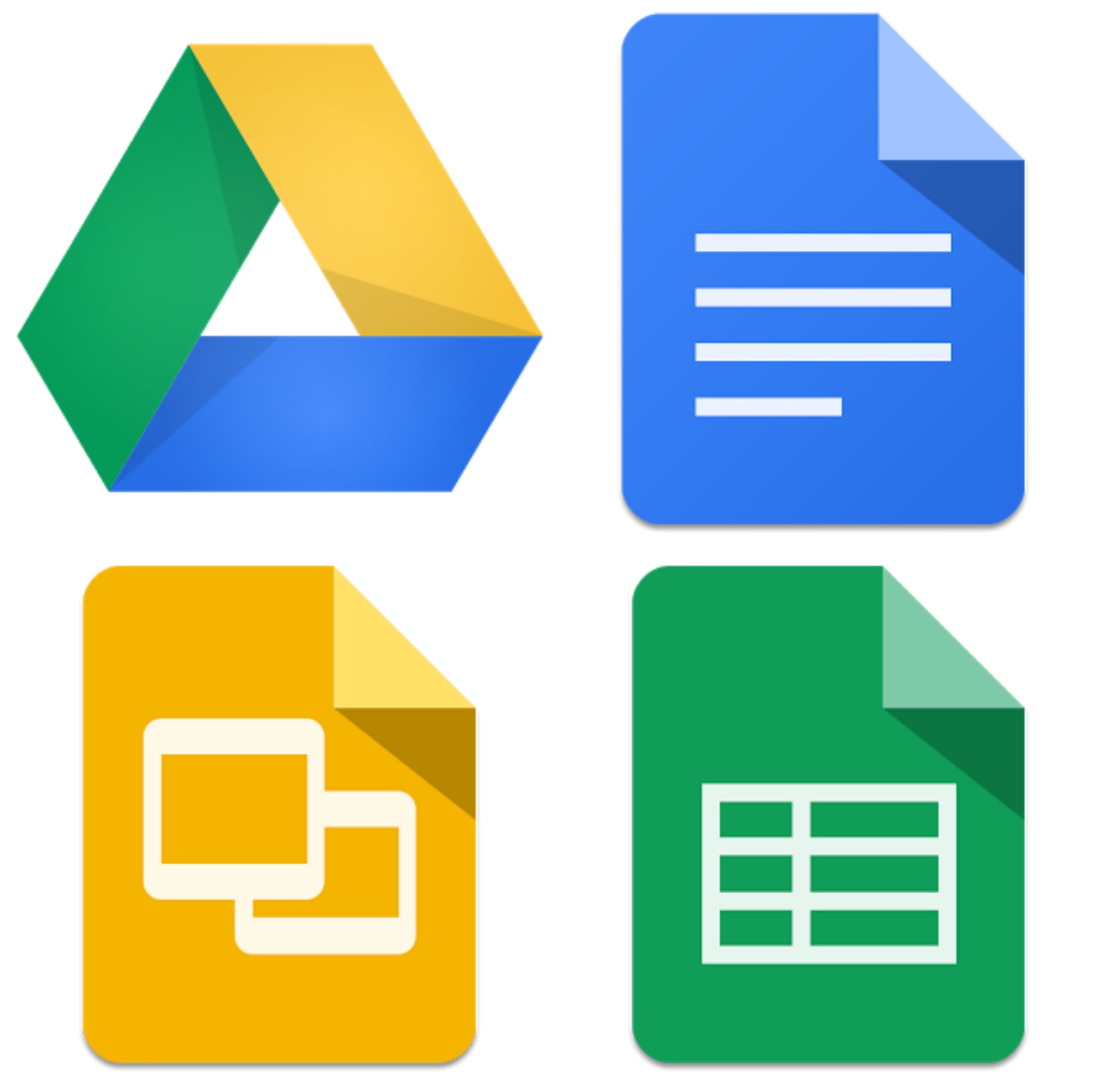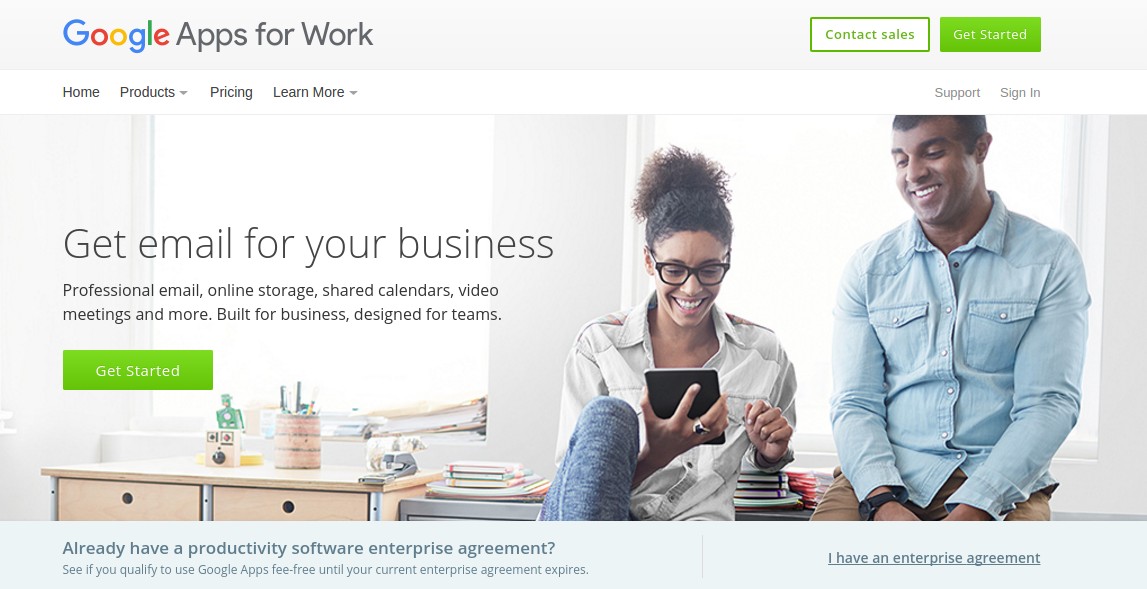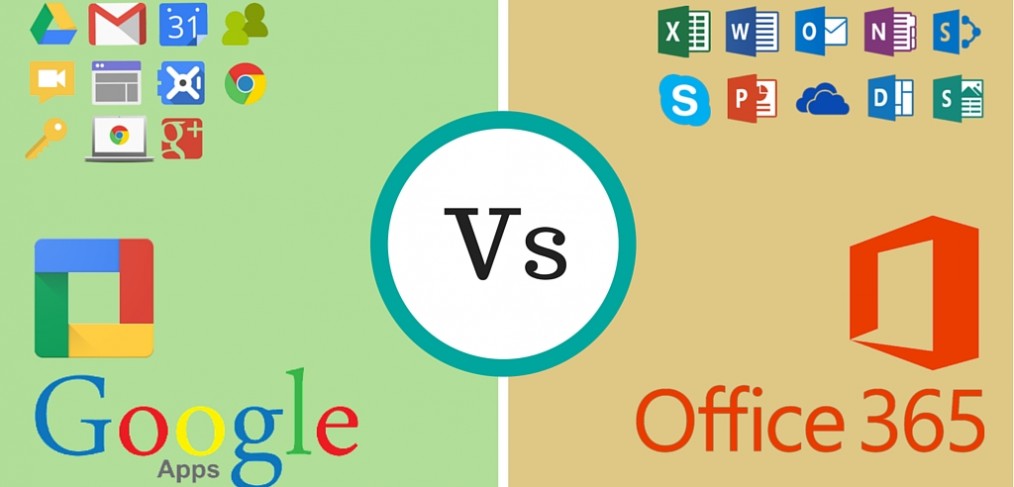What is Google Apps for Work and How Can it Benefit Your Business
Google Apps for Work is a suite of cloud-based productivity tools designed to enhance collaboration, productivity, and communication within organizations. Formerly known as Google Apps for Business, this platform offers a range of applications that cater to the diverse needs of modern businesses. At its core, Google Apps for Work is a comprehensive solution that enables teams to work together more efficiently, regardless of their location or device.
The suite includes popular applications such as Gmail, Google Drive, Google Docs, Google Sheets, Google Slides, and Google Hangouts. These tools are designed to work seamlessly together, allowing users to create, edit, and share files in real-time. With Google Apps for Work, businesses can streamline their workflow, reduce costs, and increase productivity.
One of the primary benefits of Google Apps for Work is its ability to facilitate collaboration. Google Docs, for instance, enables multiple users to edit a single document simultaneously, eliminating the need for back-and-forth emailing and version control issues. Similarly, Google Drive provides a centralized platform for storing and sharing files, making it easy for teams to access and collaborate on projects.
In addition to its collaboration features, Google Apps for Work also offers robust security and compliance measures. Google’s data centers are equipped with state-of-the-art security systems, and the platform is designed to meet the highest standards of data protection and compliance. This ensures that businesses can trust Google Apps for Work to handle their sensitive data and meet their regulatory requirements.
So, what is Google Apps for Work, and how can it benefit your business? In essence, it is a powerful platform that can help your organization work more efficiently, collaborate more effectively, and achieve its goals. By leveraging the full range of Google Apps for Work tools and features, businesses can unlock new levels of productivity, innovation, and success.
Streamlining Communication with Gmail and Google Hangouts
Effective communication is the backbone of any successful organization. Google Apps for Work provides two powerful tools to streamline communication: Gmail and Google Hangouts. Gmail is a robust email platform that offers a range of features to improve email management, including advanced search functionality, labels, and filters. With Gmail, users can quickly and easily manage their inbox, prioritize messages, and stay on top of important communications.
Google Hangouts is a versatile communication platform that enables users to engage in video conferencing, instant messaging, and voice calls. With Hangouts, teams can collaborate in real-time, regardless of their location or device. This platform is ideal for remote meetings, team discussions, and client communications. Hangouts also integrates seamlessly with Gmail, allowing users to initiate conversations and share files directly from their inbox.
To get the most out of Gmail and Google Hangouts, businesses can implement a range of strategies. For example, using labels and filters in Gmail can help users prioritize messages and reduce email clutter. Similarly, using Hangouts for video conferencing can help teams collaborate more effectively and reduce the need for in-person meetings.
In addition to these features, Google Apps for Work also provides a range of administrative tools to help businesses manage their communication platforms. For example, administrators can use the Google Admin Console to manage user accounts, set up security policies, and monitor usage. This level of control and flexibility makes it easy for businesses to customize their communication platforms to meet their unique needs.
By leveraging the power of Gmail and Google Hangouts, businesses can streamline their communication, improve collaboration, and increase productivity. Whether you’re a small business or a large enterprise, Google Apps for Work provides the tools and features you need to succeed in today’s fast-paced business environment.
Collaboration Made Easy with Google Drive and Docs
Google Drive and Google Docs are two of the most powerful collaboration tools within Google Apps for Work. These tools enable teams to work together in real-time, regardless of their location or device. With Google Drive, users can store and share files in a centralized platform, making it easy to access and collaborate on projects.
Google Docs takes collaboration to the next level by enabling multiple users to edit a single document simultaneously. This feature eliminates the need for back-and-forth emailing and version control issues, making it easy to track changes and maintain a single version of the truth. Additionally, Google Docs provides a range of features to enhance collaboration, including real-time commenting, @mentions, and revision history.
One of the key benefits of Google Drive and Google Docs is their ability to facilitate secure file sharing. With Google Drive, users can share files with specific individuals or groups, and control access levels to ensure that sensitive information is protected. Google Docs also provides a range of security features, including encryption and two-factor authentication, to ensure that documents are protected from unauthorized access.
Businesses can use Google Drive and Google Docs to improve teamwork and collaboration in a range of ways. For example, teams can use Google Docs to create and edit documents, spreadsheets, and presentations in real-time. Google Drive can be used to store and share files, including videos, images, and audio files. Additionally, businesses can use Google Drive and Google Docs to create custom workflows and integrate with other apps to streamline their workflow.
By leveraging the power of Google Drive and Google Docs, businesses can improve collaboration, increase productivity, and reduce costs. Whether you’re a small business or a large enterprise, these tools provide the flexibility and scalability you need to succeed in today’s fast-paced business environment.
How to Get Started with Google Apps for Work: A Step-by-Step Guide
Getting started with Google Apps for Work is a straightforward process that can be completed in a few simple steps. In this guide, we’ll walk you through the process of setting up and implementing Google Apps for Work within your organization.
Step 1: Sign up for Google Apps for Work
To get started, you’ll need to sign up for Google Apps for Work. You can do this by visiting the Google Apps for Work website and clicking on the “Sign up” button. You’ll be asked to provide some basic information about your organization, including your business name, email address, and phone number.
Step 2: Set up your domain
Once you’ve signed up for Google Apps for Work, you’ll need to set up your domain. This involves verifying that you own the domain and setting up the necessary DNS records. Google provides a step-by-step guide to help you through this process.
Step 3: Create user accounts
After you’ve set up your domain, you can start creating user accounts for your employees. You can do this by going to the Google Admin Console and clicking on the “Users” tab. From here, you can create new user accounts and assign them to different groups and roles.
Step 4: Set up security and compliance
Google Apps for Work provides a range of security and compliance features to help protect your organization’s data. You can set up two-factor authentication, encryption, and other security measures to ensure that your data is safe.
Step 5: Onboard employees
Once you’ve set up Google Apps for Work, you can start onboarding your employees. This involves providing them with training and support to help them get started with the platform. Google provides a range of resources to help with this process, including video tutorials and user guides.
Best Practices for Onboarding Employees
To ensure a smooth onboarding process, it’s essential to provide employees with the right training and support. Here are some best practices to keep in mind:
Provide clear instructions and guidance
Offer training and support
Encourage employees to ask questions
Monitor progress and provide feedback
By following these steps and best practices, you can ensure a successful implementation of Google Apps for Work within your organization.
Security and Compliance: How Google Apps for Work Protects Your Business
Security and compliance are top priorities for any business, and Google Apps for Work takes these concerns seriously. Google’s cloud-based platform is designed to provide a secure and compliant environment for businesses to operate in.
Encryption
Google Apps for Work uses encryption to protect data both in transit and at rest. This means that all data is encrypted before it is transmitted over the internet, and it remains encrypted while it is stored on Google’s servers.
Two-Factor Authentication
Google Apps for Work also provides two-factor authentication to add an extra layer of security to user accounts. This means that users must provide a second form of verification, such as a code sent to their phone or a biometric scan, in addition to their password.
Compliance with Industry Standards
Google Apps for Work is compliant with a range of industry standards, including HIPAA, PCI-DSS, and SOC 2. This means that businesses can trust that their data is being handled in accordance with the highest standards of security and compliance.
Data Centers
Google’s data centers are designed to provide a secure and reliable environment for data storage and processing. These data centers are equipped with state-of-the-art security systems, including biometric authentication, motion detectors, and video surveillance.
Access Controls
Google Apps for Work provides a range of access controls to help businesses manage who has access to their data. This includes features such as user authentication, authorization, and accounting (AAA), as well as role-based access control (RBAC).
Incident Response
Google has a comprehensive incident response plan in place to handle any security incidents that may occur. This plan includes procedures for identifying, containing, and eradicating security threats, as well as notifying affected parties.
By providing a secure and compliant environment, Google Apps for Work helps businesses to protect their data and maintain the trust of their customers.
Success Stories: How Businesses Have Benefited from Google Apps for Work
Google Apps for Work has been widely adopted by businesses of all sizes and industries. Here are some real-life examples of businesses that have successfully implemented Google Apps for Work and the benefits they’ve experienced.
Increased Productivity
One of the most significant benefits of Google Apps for Work is increased productivity. With Google Drive, Docs, and Sheets, teams can collaborate in real-time, regardless of their location or device. This has enabled businesses to streamline their workflow, reduce errors, and increase productivity.
Cost Savings
Google Apps for Work has also helped businesses to reduce costs. With Google’s cloud-based platform, businesses can eliminate the need for expensive hardware and software upgrades. Additionally, Google’s pricing model is based on a per-user basis, which means that businesses only pay for what they need.
Improved Collaboration
Google Apps for Work has also improved collaboration within businesses. With Google Hangouts, teams can communicate in real-time, regardless of their location or device. This has enabled businesses to improve communication, reduce misunderstandings, and increase collaboration.
Real-Life Examples
Here are some real-life examples of businesses that have successfully implemented Google Apps for Work:
Virgin America: Virgin America has implemented Google Apps for Work to improve collaboration and productivity. With Google Drive, Docs, and Sheets, Virgin America’s teams can collaborate in real-time, regardless of their location or device.
BBVA: BBVA has implemented Google Apps for Work to improve communication and collaboration. With Google Hangouts, BBVA’s teams can communicate in real-time, regardless of their location or device.
These are just a few examples of businesses that have successfully implemented Google Apps for Work. By leveraging the power of Google’s cloud-based platform, businesses can improve productivity, reduce costs, and increase collaboration.
Google Apps for Work vs. Microsoft Office 365: A Comparison
When it comes to choosing a productivity suite for your business, two of the most popular options are Google Apps for Work and Microsoft Office 365. Both platforms offer a range of tools and features to help businesses streamline their workflow, improve collaboration, and increase productivity. But which one is right for your business?
Google Apps for Work
Google Apps for Work is a cloud-based productivity suite that offers a range of tools, including Gmail, Google Drive, Google Docs, and Google Sheets. This platform is designed to be highly collaborative, with features such as real-time commenting, @mentions, and revision history. Google Apps for Work is also highly customizable, with a range of integrations with other apps and services.
Microsoft Office 365
Microsoft Office 365 is a cloud-based productivity suite that offers a range of tools, including Word, Excel, PowerPoint, and Outlook. This platform is designed to be highly compatible with other Microsoft products, with features such as seamless integration with SharePoint and OneDrive. Microsoft Office 365 is also highly secure, with features such as two-factor authentication and data loss prevention.
Comparison of Features
Here is a comparison of the features offered by Google Apps for Work and Microsoft Office 365:
Collaboration: Google Apps for Work offers real-time commenting, @mentions, and revision history, making it highly collaborative. Microsoft Office 365 offers co-authoring and commenting, but it is not as seamless as Google Apps for Work.
Customization: Google Apps for Work offers a range of integrations with other apps and services, making it highly customizable. Microsoft Office 365 offers some integrations, but it is not as extensive as Google Apps for Work.
Security: Microsoft Office 365 offers two-factor authentication and data loss prevention, making it highly secure. Google Apps for Work offers two-factor authentication, but it is not as comprehensive as Microsoft Office 365.
Pricing
The pricing for Google Apps for Work and Microsoft Office 365 varies depending on the plan and the number of users. Here is a comparison of the pricing for each platform:
Google Apps for Work: $6 per user per month (basic plan), $12 per user per month (business plan)
Microsoft Office 365: $8.25 per user per month (basic plan), $20 per user per month (business plan)
Conclusion
Both Google Apps for Work and Microsoft Office 365 are powerful productivity suites that offer a range of tools and features to help businesses streamline their workflow, improve collaboration, and increase productivity. When choosing between the two platforms, consider your business needs and the features that are most important to you.
Maximizing the Potential of Google Apps for Work: Tips and Best Practices
Google Apps for Work is a powerful productivity suite that offers a range of tools and features to help businesses streamline their workflow, improve collaboration, and increase productivity. To get the most out of Google Apps for Work, here are some expert tips and best practices to consider:
Customize Your Workflows
Google Apps for Work offers a range of customization options to help businesses tailor their workflows to their specific needs. For example, you can create custom templates for Google Docs and Sheets, or set up custom workflows for Google Drive.
Integrate with Other Apps
Google Apps for Work integrates seamlessly with a range of other apps and services, including third-party apps and custom-built solutions. This allows businesses to create a customized productivity suite that meets their specific needs.
Optimize User Adoption
To get the most out of Google Apps for Work, it’s essential to optimize user adoption. This includes providing training and support to employees, as well as encouraging them to use the platform to its full potential.
Use Google Drive to Store and Share Files
Google Drive is a powerful file storage and sharing tool that allows businesses to store and share files securely. Use Google Drive to store and share files, and take advantage of its collaboration features to work with others in real-time.
Use Google Docs to Create and Edit Documents
Google Docs is a powerful word processing tool that allows businesses to create and edit documents in real-time. Use Google Docs to create and edit documents, and take advantage of its collaboration features to work with others in real-time.
Use Google Sheets to Create and Edit Spreadsheets
Google Sheets is a powerful spreadsheet tool that allows businesses to create and edit spreadsheets in real-time. Use Google Sheets to create and edit spreadsheets, and take advantage of its collaboration features to work with others in real-time.
Use Google Hangouts to Communicate with Others
Google Hangouts is a powerful communication tool that allows businesses to communicate with others in real-time. Use Google Hangouts to communicate with others, and take advantage of its video conferencing features to hold virtual meetings.
By following these tips and best practices, businesses can maximize the potential of Google Apps for Work and get the most out of this powerful productivity suite.








